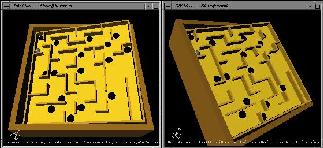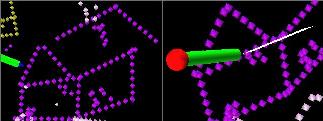
Distributed Open Inventor: A Practical Approach to Distributed 3D Graphics
Project duration: 1999-2000
Funding: Austrian Science Foundation
 under
contract no. P-12074-MAT
under
contract no. P-12074-MAT
Contact: Gerd Hesina, Dieter Schmalstieg
Description
Problems
Approach
Instead, we resorted to a different approach which is equally feasible and works even if no source code is available: OIV has a built-in concept of notification that is used to propagate updates upwards in the scene graph hierarchy if a node is modified. These notification events can be monitored with a so-called node sensor. A user-specified callback function is executed whenever something changes in the sub graph associated with the node sensor. The callback receives as parameters references to the field which has changed and to the node containing the field. Update messages can trivially be constructed from this information, as only the new absolute value of the field needs to be transmitted (idempotent messages). If you are interested in more information please use the links below.
Publications

-
Distributed Open Inventor: A Practical Approach to Distributed 3D Graphics
Gerd Hesina, Dieter Schmalstieg, Anton Fuhrmann, and Werner Purgathofer
appeared in: Proceedings of the ACM Symposium on Virtual Reality Software and Technology (VRST'99), pp. 74-81, 1999.
Download

-
I will make an open-source version available in the near future. (approx. Jan 2001)

